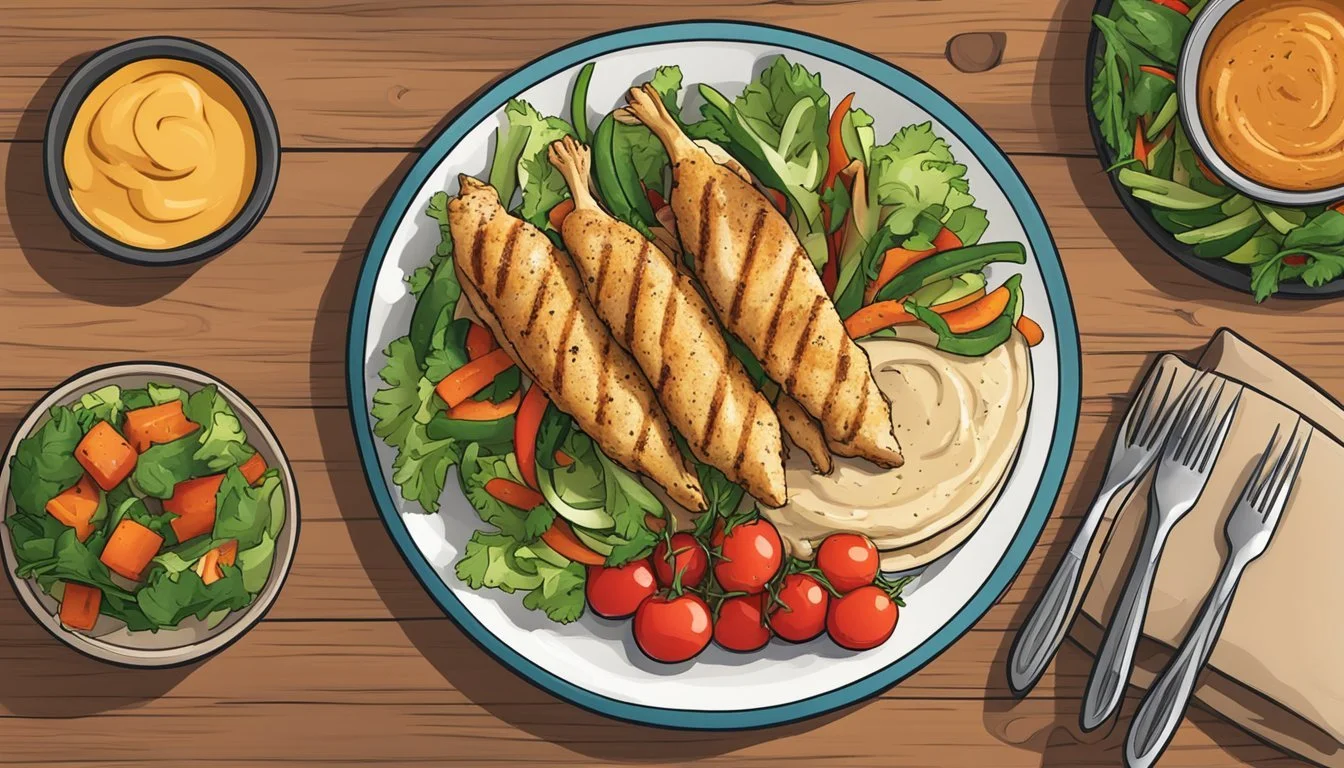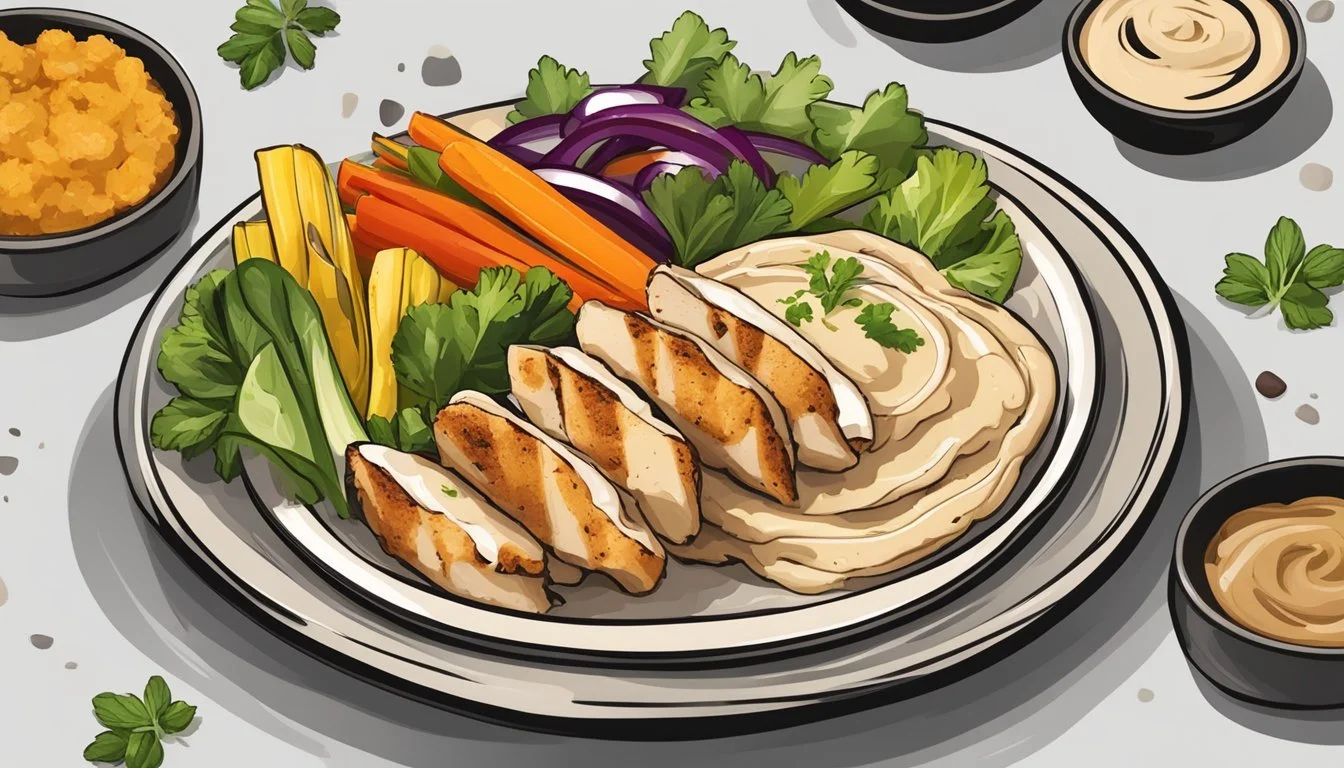How Long Does Gluten-Free Chicken Shawarma Last?
Storage Tips & Shelf Life
Gluten-free chicken shawarma is a popular dish for those pursuing a gluten-free diet while indulging in flavorful Middle Eastern cuisine. While the taste and health benefits are enticing, the critical question for many is: how long does gluten-free chicken shawarma last? If stored properly in the refrigerator, gluten-free chicken shawarma can last for up to four days. This duration ensures that the spices and flavors remain intact while the chicken stays safe to eat.
For those who prefer to prepare meals in advance or have leftovers, knowing the proper storage techniques is essential. Keeping the shawarma in an airtight container can extend its freshness. Reheating should be done thoroughly to maintain texture and flavor.
In addition to storage, the method of preparation also affects how long the shawarma will stay good. Whether it’s made using a slow cooker, grilled, or baked in an oven, ensuring that it is cooked at the right temperature and stored immediately after cooling will maximize its shelf life. This article delves deeper into the best practices for storing and reheating, ensuring you can enjoy your delicious gluten-free chicken shawarma for days.
Understanding Gluten-Free Shawarma
Gluten-free chicken shawarma is a popular Middle Eastern dish made safe for those with gluten sensitivities. It involves ensuring the ingredients and preparation methods do not introduce gluten contamination.
What Is Gluten-Free Chicken Shawarma?
Gluten-free chicken shawarma involves marinated, thinly sliced chicken cooked on a vertical rotisserie or alternative cooking methods. The marinade typically includes a blend of spices like cumin, paprika, and turmeric.
Avoiding gluten means using ingredients like gluten-free wraps or bread instead of traditional options. This allows individuals with gluten sensitivities or celiac disease to enjoy the dish without health concerns.
Identifying Gluten-Free Ingredients
To ensure your chicken shawarma is gluten-free, carefully select ingredients. Use gluten-free versions of common components such as soy sauce or bread. Verify that spices and seasonings don’t contain gluten-based fillers or additives.
Be mindful of cross-contamination risks, especially when using shared kitchen equipment. Always choose certified gluten-free products when available, and store gluten-free items separately from gluten-containing foods.
Importance of Gluten-Free for Celiac Disease
For individuals with celiac disease, consuming gluten can cause severe health issues, including digestive distress and nutrient malabsorption. Ensuring chicken shawarma is gluten-free is crucial for their well-being.
This involves strict kitchen practices to avoid cross-contamination and opting for gluten-free bread or wraps. Following these precautions, those with celiac disease can safely enjoy this flavorful dish.
Preparation of Gluten-Free Chicken Shawarma
Proper preparation of gluten-free chicken shawarma involves choosing the right chicken, using gluten-free spices and marinades, and selecting suitable gluten-free accompaniments. These steps ensure the dish is both flavorful and safe for those avoiding gluten.
Choosing the Right Chicken
When selecting chicken for shawarma, opt for boneless, skinless chicken thighs. They are more flavorful and tender than chicken breasts. Make sure the chicken is fresh or properly thawed if using frozen.
Cut the chicken into thin slices for even cooking and better absorption of marinades. Organic or free-range chicken is often recommended for its higher quality and flavor.
Gluten-Free Spices and Marinades
Creating a rich, flavorful marinade is key. Use gluten-free spices such as cumin, coriander, paprika, and turmeric. Check labels to ensure no gluten-containing fillers are present.
Combine these spices with olive oil, lemon juice, garlic, and fresh herbs like parsley and cilantro. Tahini can also add depth. Marinate the chicken for at least 2 hours to allow the flavors to penetrate.
Gluten-Free Alternative Accompaniments
Instead of traditional pita, use gluten-free wraps or lettuce wraps. They provide a gluten-free option without compromising on texture.
Serve the shawarma with a variety of sides such as hummus, tabbouleh made with gluten-free grains, and fresh vegetables. Ensure any sauces or dressings are free of gluten.
By focusing on these key aspects, you can prepare a delicious and safe gluten-free chicken shawarma.
Safety Measures in Cooking and Storing
Proper cooking and storing techniques are essential in maintaining the safety and quality of gluten-free chicken shawarma. These steps prevent foodborne illnesses and ensure the dish remains gluten-free.
Avoiding Cross-Contamination
Cross-contamination is a critical concern when preparing gluten-free chicken shawarma. It's essential to use separate utensils, cutting boards, and cooking surfaces for gluten-free ingredients. Thoroughly clean all kitchen tools before use.
Store gluten-free chicken shawarma in airtight containers to avoid contamination. Labeling these containers helps in identifying gluten-free items quickly. Keep the chicken refrigerated at or below 40°F (4°C). For longer storage, freezing the dish is effective and safe, extending its shelf life while preserving quality. Use these methods to ensure safety and avoid compromising gluten-free integrity.
Shelf Life of Gluten-Free Chicken Shawarma
Proper storage of gluten-free chicken shawarma ensures it remains safe to consume while retaining its flavor and texture. Below are key guidelines for refrigeration and freezing, as well as signs that indicate spoilage.
Refrigeration and Freezing Guidelines
Gluten-free chicken shawarma can be safely stored in the refrigerator for up to 3-4 days. It should be kept in an airtight container to prevent drying out and contamination from other foods. Be sure to label the container with the date it was cooked.
For longer storage, freezing is recommended. When freezing, place the shawarma in an airtight container or vacuum-sealed bag to maintain its quality. Properly frozen gluten-free chicken shawarma can last up to 2-3 months in the freezer. Labeling the package with the date of freezing is crucial for keeping track.
To thaw, move the frozen shawarma from the freezer to the refrigerator and allow it to thaw slowly overnight. Reheat thoroughly before consuming.
Signs of Spoilage
It is important to check for signs of spoilage before consuming stored gluten-free chicken shawarma. Visual indicators include any unusual colors, such as a grayish tint on the meat. Also, watch for any mold growth or a slimy texture, which are clear signs the shawarma is no longer safe to eat.
A sour or off-putting smell is another indicator. Fresh shawarma should have a pleasant, spiced aroma.
Pay attention to any changes in taste. If the shawarma tastes off or sour, it may have spoiled, even if there are no visible signs. Always prioritize safety by discarding any shawarma that shows signs of spoilage.
Nutritional Benefits
Chicken shawarma offers a variety of nutritional benefits, particularly in terms of protein content and essential vitamins and minerals. These benefits contribute to a balanced diet and overall health.
Proteins and Healthy Fats in Shawarma
Chicken shawarma is an excellent source of protein. Both chicken breasts and chicken thighs are commonly used, providing necessary amino acids for muscle repair and growth.
Olive oil is often used in the marinade, adding healthy monounsaturated fats which can help reduce bad cholesterol levels. These fats are essential for heart health.
In addition to the protein from the chicken, the use of herbs and spices in the marinade may include ingredients such as garlic and cumin, which have their own antioxidant properties.
Vitamins and Minerals
Shawarma is also a good source of vitamins and minerals. The inclusion of lemon juice in the marinade adds Vitamin C, which aids in the absorption of iron from the chicken and helps maintain a healthy immune system.
Chicken itself is rich in B-vitamins, which are essential for energy production and brain function.
Minerals such as iron, zinc, and phosphorus are present in chicken and contribute to various aspects of health, including oxygen transport (iron), immune function (zinc), and bone health (phosphorus).
Serving Suggestions
When serving gluten-free chicken shawarma, it's important to create a balanced meal with complementary flavors and textures. Pair it with gluten-free sides and condiments to enhance the dining experience.
Creating a Balanced Meal
A balanced meal includes a mix of protein, vegetables, and carbs. Chicken shawarma serves as the protein. For carbs, offer gluten-free pita bread or rice seasoned with herbs. Both options accommodate dietary restrictions and provide additional flavor.
Incorporate a salad for freshness and nutrients. A mix of cucumbers, tomatoes, and red onions with a simple lemon vinaigrette works well. For a creamy element, include tahini sauce or hummus. These add depth and complement the seasoning of the shawarma.
Finally, add some grilled veggies like bell peppers or zucchini. These provide a smoky flavor that pairs perfectly with the shawarma.
Gluten-Free Sides and Condiments
Selecting the right sides and condiments can elevate the meal. Gluten-free shawarma sauces are essential; ensure they are labeled as such or made from safe ingredients. Popular choices include garlic yogurt sauce and tangy tahini sauce.
Offer pickled vegetables like cucumbers and turnips for crunch and acidity. These help balance the richness of the shawarma and add a vibrant color to the plate.
For a carbohydrate option, choose quinoa salad or tabbouleh made with gluten-free grains like buckwheat. These provide a light, refreshing accompaniment.
Serve everything in small bowls or plates, allowing diners to mix and match as they prefer. This setup adds variety and keeps the meal interesting.







